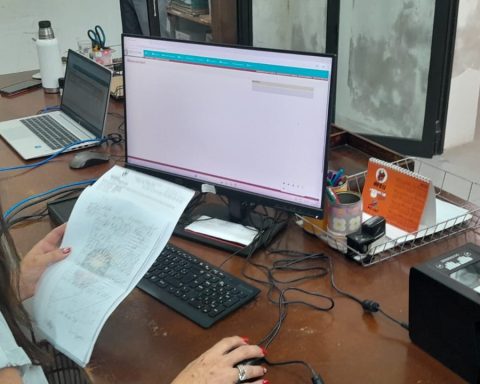The Risk Center of the Central Bank of Uruguay (BCU) reported that Uruguay had 668,813 irrecoverable debtors in Februaryin the response to the request for access to information requested by the Uruguayan Banking Association (AEBU).
Total, 1,932,760 people have or had some type of debt registered by the BCU. More than half of them, 1,082,008, for the bank have a “strong ability to pay”a greater possibility of paying what is owed.
There are a total of five categories: a second tier of people with “adequate ability to pay”which in February represented the 7% of debtors (131,454); a third of the population “committed ability to pay”which included the 2% of debts (31,698); a room for people with “very compromised ability to pay”, with only 1% of debtors (18,787). The fifth level is that of the “irrecoverable” debtorswhich with its almost 670 thousand people covered the 35% of debts.
Cabildo Abierto has placed special emphasis on these debtors, for whom it seeks to sanction a debt restructuring law. After a first bill was rejected by Parliament, in mid-May the party submitted a second draftand threatened resort to a plebiscite if a vote was not made through the legislative process.
Debtors: women “are better qualified” but “there are biases” that “disfavor” them
Of those located in the last quintile, the population divided equally between men and women, with 50% per side. In total, the 53% of debtors were womenalthough from AEBU they clarified that the data “corresponds to demographic data.”
On the other hand, of the total number of women with debts there was 58% with strong payment capacity and 33% unrecoverablewhile of the total number of men there were 54% in the first category and 37% in the last, Therefore, the BCU concluded that “Based on their credit history and ability to pay, women are better qualified in the formal financial system.”
“In general the youngest and the men have increased problems meeting payments stipulated in a credit and, therefore, They are the worst qualified. This is a bit contradictory, since, when accessing a loan for the first time, Various studies show that there are gender biases that disadvantage women. While the data shows that they are better payers”wrote the agency.
Debtors by age and category
He 57% of irrecoverable debtors at the time of the report they were people between 36 and 70 years old. A 35% were under 35and only 9% were older than 71 years.
However, when looking at the percentage of people in each age division who are in the bottom quintile, the numbers even out: 41% of debtors under 35 were in the worst credit categorywhile of the total number of debtors from 36 to 70 the percentage of unrecoverables was 34%.
Despite the fact that they represented less than 10% of the total irrecoverable debtors, one in four people over the age of 71 with debt fell into that category.
The labor sectors most affected were those of the trade and livestockwith a 29 and 24% of the debtors respectively. However, the BCU indicated that “credits to families represent 97% of operations”and this sector is the one that showed a higher percentage of irrecoverable debtors with a 35%, more than 20 points higher than the two aforementioned sectors.

















